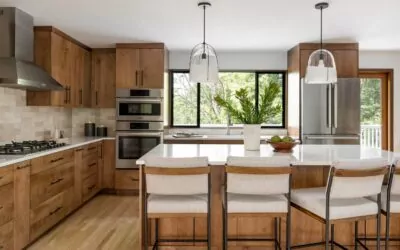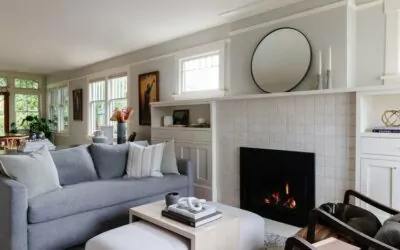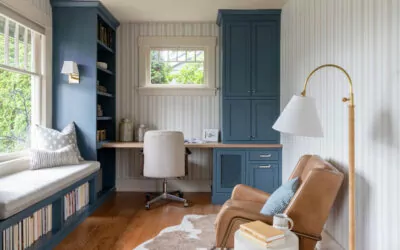With it being the dead of winter (as I’m writing this there is 7” of snow on the ground!) one of the best things in our opinion is snuggling up in a fuzzy throw blanket by the fire with a warm drink in hand. Don’t you agree? It’s just such a pleasant feeling being in a space that’s warm and cozy.
You’ve got the fuzzy blanket, the comfy throw pillows, and a sofa fit for lounging. But now what? There is one important element missing that will take your cozy space to the next level – and that is area rugs! And not just one area rug, but TWO. Having layers of texture and pattern elevate your space and not only provide warmth underfoot but also lend a feeling of warmth overall.
Layering rugs can be a bit tricky, though. As you want to make sure you aren’t putting two competing patterns together or mixing textiles that don’t go with one another. Here’s some steps to follow when selecting rugs and some of our favorite ways we’ve seen them put together.
Guide for Layering Rugs:
- Before picking out any rugs – consider the space they’ll be in. Is it a high traffic area? Is there the possibility of food spills? What kind of maintenance are you comfortable with? For instance, we typically don’t specify shag rugs for under dining tables since there is a higher chance of food falling from the table and getting lost or forgotten.
- Choose a base rug – this rug will be larger of the two, and depending on the size of your space could get up to be 10×14 or 12×15 in size (unless you go even bigger by getting a custom size!). For example, if you are putting layered rugs in your living room and space permits, try to have all furniture sitting on the rug. This helps to make the space feel larger. Typically, the base rug is neutral in color or has a subtle pattern and adds texture. A jute rug makes an excellent base rug option.
- Choose the top rug – this rug is smaller than the base rug and it’s size will depend on the furniture it’s coordinating with. If it’s going under a bed, make sure the rug is large enough to stick out on either side and past the foot of the bed so you can see it’s pattern and/or color. You’ll want to make sure the top rug doesn’t clash with your base rug, which is why we recommend getting a neutral base rug because it’s hard to choose something that competes with it. Some great options for a top rug include: a beautiful vintage persian rug with a lot of color and pattern, a soft shag rug (can be solid or have a pattern), or a cowhide or sheepskin rug.Layering rugs is also a great way to incorporate a vintage rug you love that may not have been the right size to standalone in your space. Since these rugs are one of a kind you can’t get them in multiple sizes so layering resolves the issue of not having a place for one.
Here are a few of our favorite ways we’ve seen rugs layered:

(Above) Found on Home Bunch, this living room shows a prime example of layered a large neutral area rug with a vintage rug full of intricate patterns and colors. You’ll also notice all furniture pieces sit on the larger base rug.
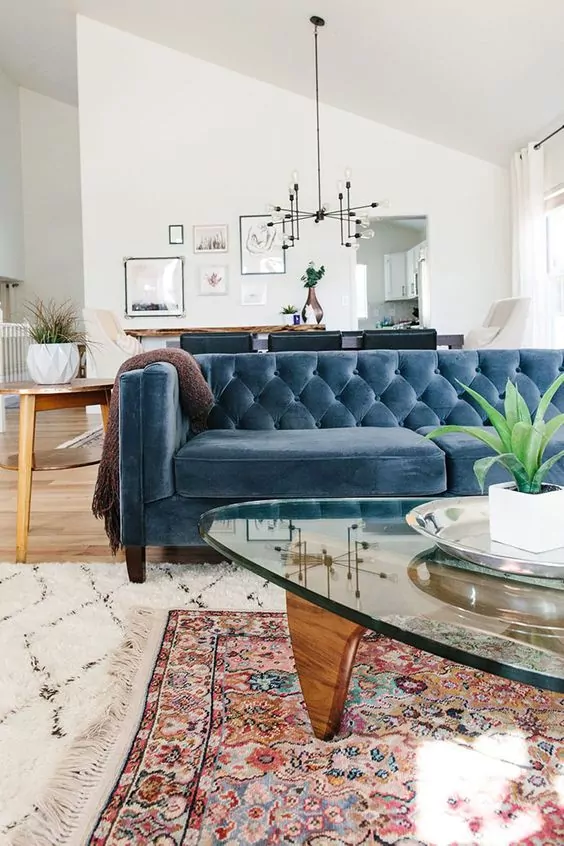
(Above) I love how Glitter Guide layered a geometric patterned shag rug with a bright and colorful vintage rug complete with tassels! This unexpected pair goes perfectly together. Even though both are patterned rugs, one is much larger scale (geometric base rug) and one is smaller scale with a lot more detail (vintage top rug). Both balance one another out visually. They also each have different textures, another reason why they don’t clash. You’ll notice that the sofa and side table don’t sit on the base rug fully – and that’s OK. As long as the base rug is large enough to reach under some of the furniture (the front legs of the sofa sit on the rug as well as the entire coffee table) than you’re in the clear. It’s when rugs aren’t tucked under any furniture is when it starts to look funny.
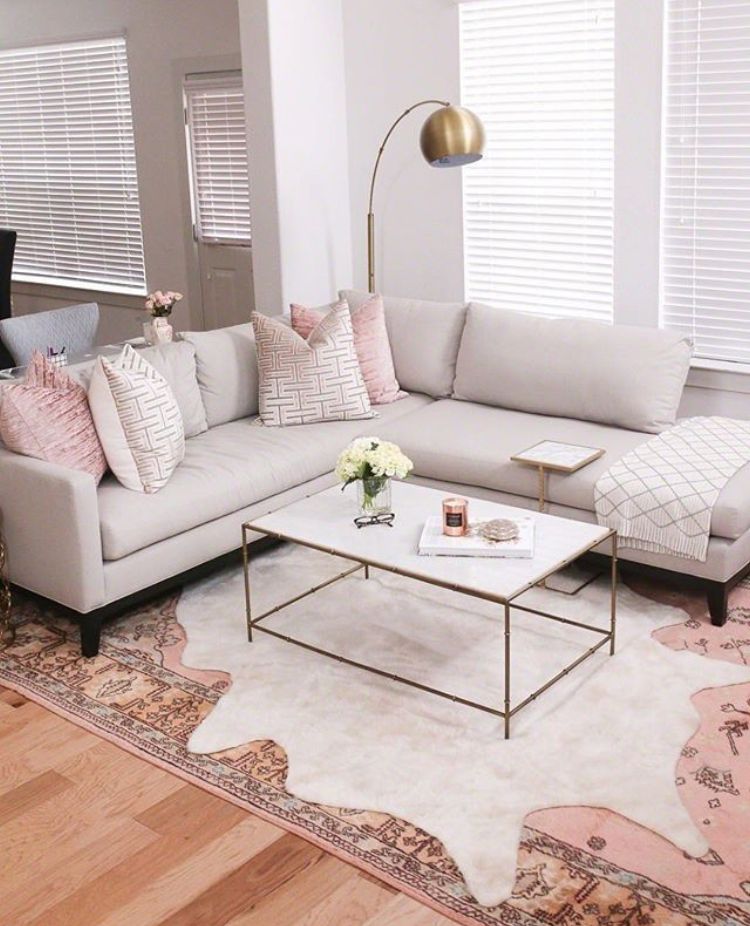
Another unlikely pair is a blush vintage rug with a neutral cowhide. But look how well they go together?! (Source: unknown on Pinterest *if you know who to give credit to please let us know!)

Found off Lazy Loft, a sheepskin and geometric natural jute rug are the perfect combo! Naturally, jute isn’t the softest thing underfoot but it is quite durable. Sheepskin is just the opposite – not very durable but oh, so soft. They balance each other out quite nicely. The cherry on top is the jute rug’s geometric pattern, adding more interest without competing with other elements.

Neutral on neutral – want to layer rugs without attracting too much attention? Or are you someone who steers away from colors and is all about white, beige, and grey? Then finding two neutral rugs that don’t clash is perfect for you. These two rugs have the same color palette which already means they speak to each other well, but what makes them two of a kind is their different textures. The base rug is a hand woven jute forming a subtle chevron pattern and the vintage rug has a much smaller, intricate pattern – balancing one another out well. (Source: One Kings Lane)
There are endless ways to style and layer rugs together so if you want to find more inspiration, head on over to Pinterest where we found all these examples. If you have any questions or comments about this blog post or others, please feel free to leave a comment in the section below!
